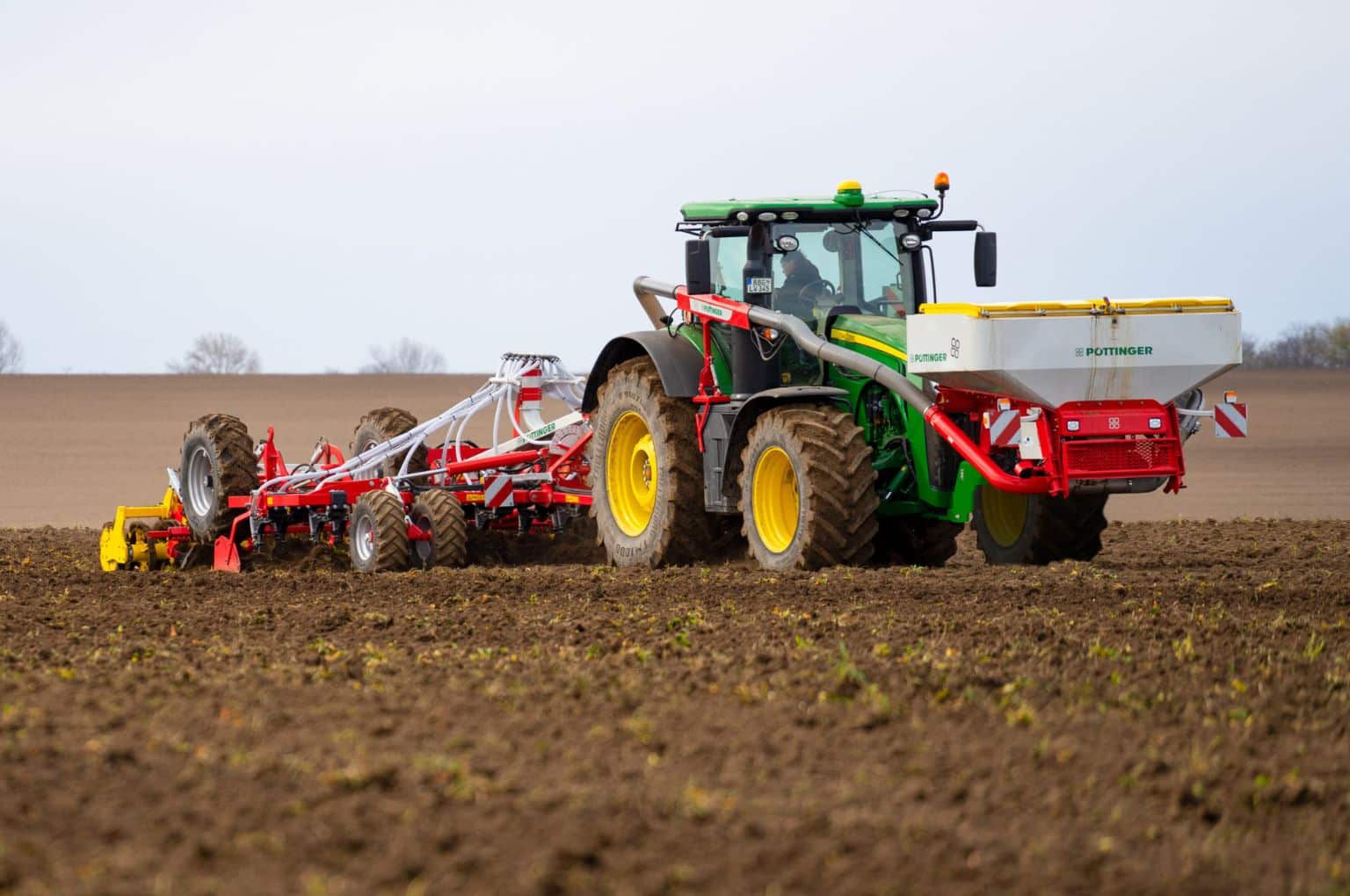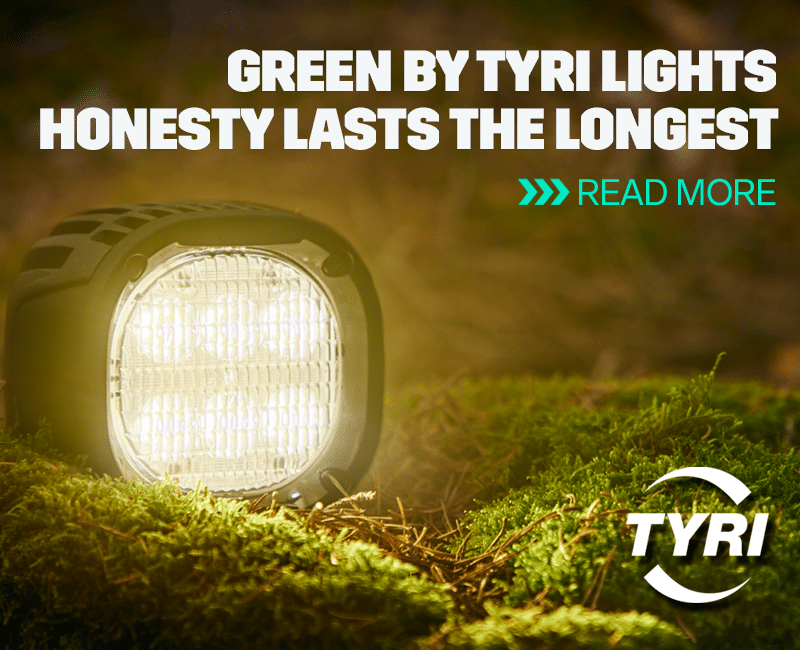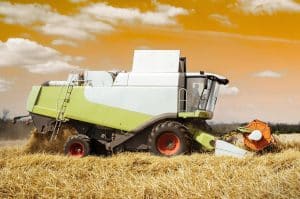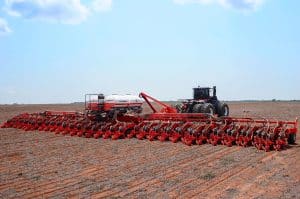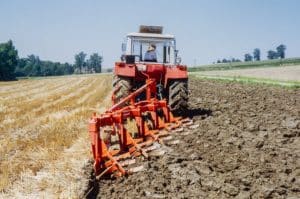The new Amico F front hopper and Terria stubble cultivator from Pöttinger together, offer the possibility to apply fertiliser and sow a cover crop at the same time. The capacity of 1,700 or 2,400 litres and a division of 60:40 ensures a wide range of applications. The hopper is available with one or two metering units for mixing different components.
In the future, it will be necessary to deploy resources worldwide even more purpose-specifically and efficiently. That is why Pöttinger has teamed up the trailed Terria stubble cultivator with the Amico F front hopper solo for resource-saving work.
Convenient operation
The metering units of the Amico F are easily accessible from the front, so the metering wheels can be changed quickly. A shut-off plate makes swapping the metering wheels even easier. Calibration can be performed conveniently from the ground using a calibration button. An additional loading platform makes it easier to fill the hopper. A large pressure-tight fitting is provided for emptying residual material.
The capacity of 1,700 or 2,400 litres and a division of 60:40 ensures a wide range of applications for the front hopper. To ensure convenient operation, the Amico F front hopper is equipped with ISOBUS as standard. One or two metering units can be controlled site-specifically by the intelligent control system. Furthermore, the hopper can also be used no problem together with third-party equipment thanks to the ISOBUS control system.
Transport large volumes a long way
In order to be able to achieve long conveying distances, the Amico F features a pressurised hopper system. This enables consistently high volumes of seed and fertiliser materials to be mixed and transported. A high level of reliability is also ensured because the seed and fertiliser are transported under pressure.
Versatile application capabilities
– Sowing of a wide variety of cover crops
– Direct fertilisation of the seed as a starter using the Single Shoot process
– Sowing companion crops to control weed growth
– Applying fertiliser deposits in autumn
– Sowing different grass crops such as grass and clover simultaneously.
Sustainable and resource-saving for the best plant growth
The aim of the combined method is to loosen the soil and at the same time apply fertiliser, as it can be made best available to the crop by direct placement in the soil. Nutrient depletion is prevented as a result. Nutrient deficiencies can be precisely compensated in different soil layers using this process. This promotes targeted root growth because the roots are attracted to the fertiliser. A strongly developed root system promotes plant growth and crop density.
Soil cultivation made easy
The Terria with fertiliser equipment can be used for both stubble cultivation as well as deep loosening work. The wide tine spacing of Terria stubble cultivators ensures reliable operation even with high volumes of organic matter. The incorporation of harvest residues and cover crops is carried out using different types of share and is possible with wings, the fertiliser boots remain permanently mounted. Different deposit depths for the fertiliser allow different levels of soil to be supplied as needed. A total of three different depths can be set as follows:
Top placement
The outlet on the fertiliser boot is set to 100 percent on top so that the seed is mixed directly into the upper layer of soil approx. 0 to 5 cm deep. The application point is right behind the tine leg for fertilisation, this can be used in the spring when preparing the seedbed. Emission losses are avoided because the fertiliser is immediately covered.
Mixed placement
With 50 percent applied on top and 50 percent at the bottom – placed near the surface and at the point of the coulter. The fertiliser is distributed over the entire working depth, this ideally suited for phosphate compensation fertilisation. The method is suitable for primary tillage in autumn with working depths from 15 cm.
Bottom placement
The outlet on the fertiliser boot is set to 100 percent at the point of the coulter. This means that fertiliser can be placed further down at up to 35 cm deep. The soil is deeply loosened during this process. Preferably, stabilising nitrogen fertilisers should be used and emission losses are avoided. Additional nutrient deficiencies can be compensated in this way.

![RightSpot Ad Template Digital-1400×190-px[76] Ag Leader RightSpot](https://world-agritech.com/wp-content/uploads/elementor/thumbs/RightSpot-Ad-Template-Digital-1400x190-px76-r316mmc0hgoob9qxmklllnnbxta1nlj7t2vjkoyeek.png)

